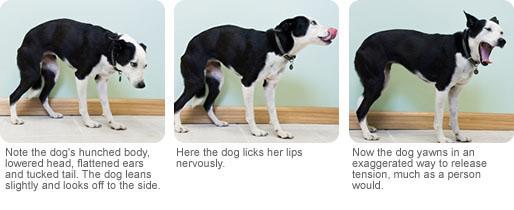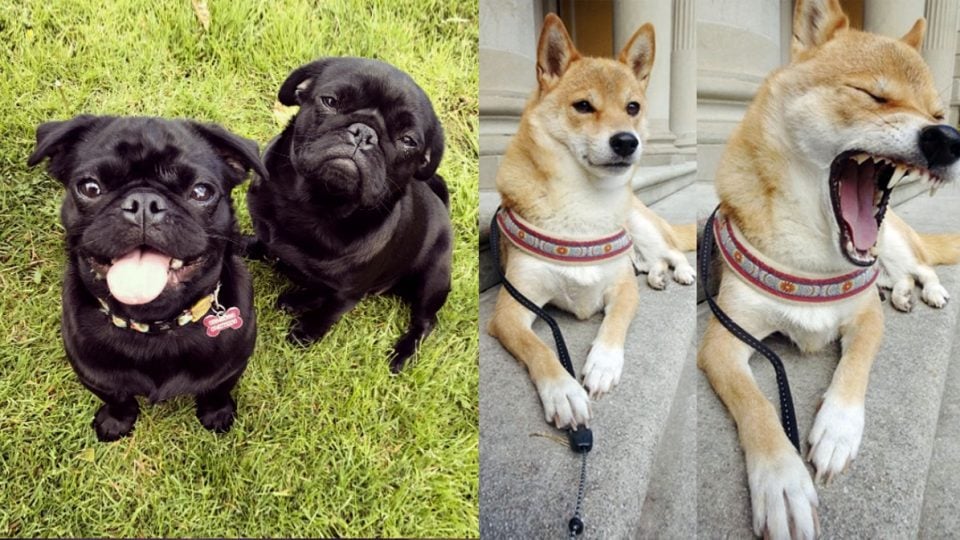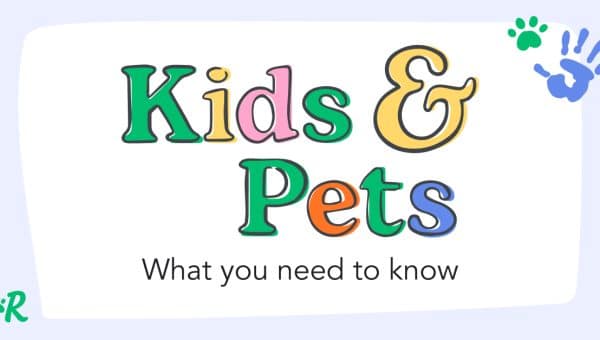Dogs quite literally wear their emotions on their sleeve — well, on their fur, at least. But I’m always surprised at how little your average guardian understands their pup’s body language. We tend to see what we want to see — that your dog loves the dog park or hanging out with your sweet 6 year-old niece, for instance, when, in truth, these things produce only anxiety and discomfort.
The average dog can understand up to 200 words, but no matter how hard you try, your dog will never learn to speak. In order to really communicate, it’s up to you to learn their language. Body language.
While some body parts are more expressive than others, it’s important to look at the dog’s body as a whole. Not every dog will display every signal, but you’re likely to see a combination of visual markers when your dog is expressing these common emotions.

source: ASPCA
Fear
This type of body language may be triggered by scary environments or interactions. Extended loud noises (such as walking by a construction site or fireworks), people or animals that don’t respect your dog’s space, or sudden events (such as a passing skateboarder or falling object) are common triggers.
- Avoiding eye contact and/or turning the head away from the scariness
- Flattened ears
- Piloerection (hair standing on end) anywhere from the shoulder blades down to the base of the tail
- Tense or crouched body, may be combined with shaking
- Tucked tail
- “Whale eye” – when a dog’s eye moves in the opposite direction of the head so that the whites are obviously showing
- Lip licking (also called tongue flicking) or yawning
- Hiding or attempting to get distance from the scary trigger
Joy or excitement
Signs of a dog having a fantastic time include:
- Loosey-goosey body posture
- Ears may be upright or flattened or switch quickly between the two
- Tail may be held high or in a loose, natural position
- In play, bounding around and humping are common
- A relaxed or open mouth that may appear to be slightly smiling
- Gentle or even more intense mouthing is common
Anxiety or discomfort
These signals suggest a dog is not comfortable with the situation they are in – whether that’s too much attention and manhandling from a family member or a visit to the dog park.
- Lip licking, yawning and/or panting
- Avoiding eye contact or attempting to move away from the situation
- A lowered or possibly tucked tail
Uncertainty
This body language combination often occurs when a dog is simply not sure how to respond to a particular situation. It may be triggered by an unfamiliar dog at the dog park, visitors to the home, or other new experiences.
- Holding up a single paw while greeting, watching or approaching
- Humping
- Rolling over onto the back to expose the belly
- Lip licking or yawning
- Avoiding eye contact
Extreme fear or self-defense
When a fearful dog feels like it has to defend itself from a threat, fear and aggression become two sides of the same coin. In communicating extreme fear, then, a dog may end up displaying body language that looks more like aggression or even excitement. Extreme fear is typically triggered by the unwelcome approach of an unfamiliar person or animal.
- A “hard” stare at the aggressor in which your dog is unwilling to turn away or be distracted
- A fear grimace in which the dog’s lips are pulled back into what almost looks like a wide smile or other bearing of teeth (possibly accompanied by a growl)
- Tense or crouched body
- Tail may be elevated and tense or tucked
- Piloerection (hair standing on end)
- Ears may be alert, tense and upright or flat against the head
_
Featured images: Ringo the Shibagirl and Charlie Sammons
_





